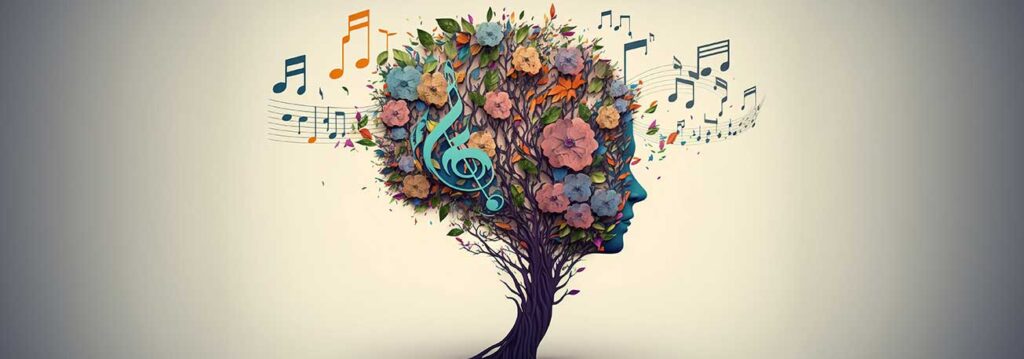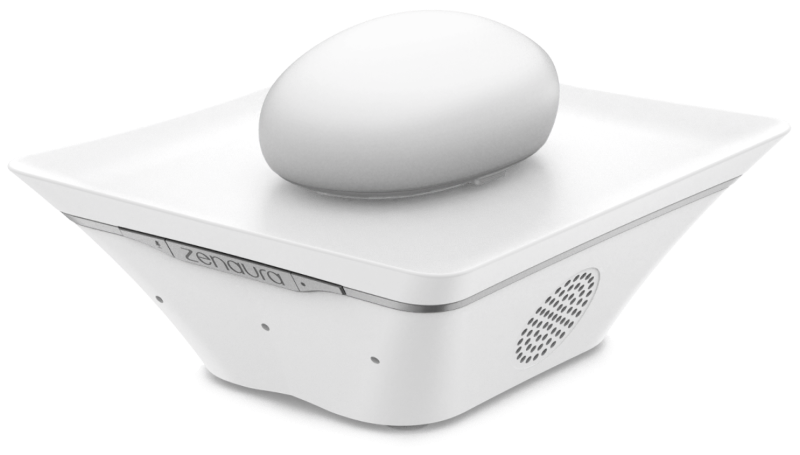In a world full of stress, worry, and the constant pressures of modern life, the search for holistic well-being has suddenly come to our minds. Music therapy stands out as a bright light of hope in this situation. It is a powerful and flexible way to improve physical, social, and mental health.
Out of all the different kinds of treatment we can use, “Music produces a kind of pleasure which human nature cannot do without,” as famously stated by Confucius. Music therapy stands out as a real star because it uses the universal language of music to heal and relax people. It’s a multifaceted method that gets to the heart of who we are, matching our inner rhythms and feelings.
Now, let’s go on an enlightening trip together as we show you a complete guide to music therapy. With a single-minded focus, we will dig deep into its history, explore its many benefits, investigate the complicated techniques used, and shed light on how it can be used.
By the end of this article, you’ll gain a deep and well-rounded understanding of this practise that can change your life and how it can bring harmony into your life.

The Origins and Evolution of Music Therapy
Music therapy has been around for a long time. Its roots can be traced back to ancient cultures like the Greeks, Egyptians, and Native Americans, who all knew that music had a big effect on people’s emotions and general health. This practise has been around for a long time and has been used in many different countries and times. During the 20th century, it became more of a formalised discipline.
In the 1940s, the United States saw the start of the first organised music treatment programme. This was a major turning point. This was the first time that music therapy was used in an organised way in a clinical setting. It set the stage for how important music therapy is in therapy today.
From its humble but rich beginnings in the pages of history to its current status as a powerful healing method, music therapy continues to weave sound, feeling, and science into a tapestry of whole health.

What is music therapy?
The term “music therapy” refers to a form of treatment that makes advantage of the fact that individuals naturally feel better when they listen to music to assist patients in improving their mental health and overall well-being.
It is an action with a clear goal that may include the following:
- Making music
- Writing songs
- Singing
- Dancing
- Listening to music
- Discussing music
This kind of treatment may help people with sadness and anxiety and help people with health problems live better lives. Anyone can do music therapy; you don’t need to know anything about music to feel its benefits.
Unravelling The Therapeutic Process
Humans are also affected by frequency because they are aware. On the contrary, our ideas, feelings, and physical bodies all resonate at specific frequencies that are part of this cosmic symphony.
Our home world, Earth, has a unique frequency that is very important to life as we know it. All living things send out vibrations that mix with the frequency of the Earth, creating a harmonious resonance that changes the planet’s overall energy balance.

Discover The Multifaceted Benefits of Music Therapy
The scope of music therapy’s benefits is as diverse as the individuals it serves. From children with developmental disorders to seniors with dementia, music therapy has been found to be effective in a wide range of contexts.
- Emotional Healing: Music has the power to evoke and express emotions, making it a potent tool for emotional healing and stress reduction. Listening to or creating music can alleviate anxiety, depression, and mood disorders.
- Cognitive Enhancement: Engaging with music stimulates various brain areas, promoting cognitive functions such as memory, attention, and problem-solving. This is especially beneficial for individuals with cognitive impairments or neurodegenerative diseases.
- Physical Rehabilitation: Rhythmic auditory stimulation can aid in motor rehabilitation. Patients recovering from strokes or physical injuries can benefit from rhythmic exercises synchronised to music.
- Communication and Social Interaction: Music provides a nonverbal and creative means of communication, making it valuable for individuals with communication disorders or autism. Group music-making fosters social interaction and teamwork.
- Pain Management: Music’s distraction and relaxation effects can help alleviate pain and discomfort, reducing the need for excessive medication.

Types of music therapy
- Active Music-Making: Clients actively create music using instruments, voice, or body percussion, promoting self-expression and engagement.
- Receptive Music Listening: Passive engagement with music can induce relaxation, elicit emotions, and encourage introspection.
- Songwriting and Lyric Analysis: Creating original songs or analysing existing lyrics can be therapeutic for exploring emotions and personal narratives.
- Guided Imagery and Music (GIM): GIM combines music listening with guided visualisation, facilitating deep exploration of emotions and experiences.
- Neurologic Music Therapy (NMT): NMT uses scientific principles to target specific neurological issues, like motor skills or speech deficits.

How can music therapy help?
Music therapy has an amazing ability to help people feel better and heal. It can help relieve stress, anxiety, and sadness by giving you something to do with melodies and rhythms. It improves cognitive processes like memory, focus, and creativity through carefully planned sessions. It gives people a way to share their feelings and helps them deal with traumas and feelings.
Music therapy helps people with physical disabilities get better and learn new movement skills. Also, music’s natural ability to connect and share makes it an effective way to improve social interactions and make people feel like they belong. In the end, music therapy brings about a symphony of positive changes that are good for the mind, body, and soul.
People may benefit from music therapy if they are:
- Alzheimer’s disease
- Anxiety or stress disorders
- Autism
- Heart conditions
- Chronic pain
- Depression
- Diabetes
- Verbal and nonverbal communication difficulties
- Emotional dysregulation
- Low self-esteem
- Headaches
- Impulsivity
- Bad mood
- Post-traumatic stress disorder
- Issues related to childbirth
- Rehabilitation after a medical procedure or injury
- Breathing problems
- Substance abuse
- Surgery-related issues
- Traumatic brain injury
- Issues with movement or coordination
Research suggests that it can be helpful for people with:
- Insomnia
- Obsessive-compulsive disorder
- Schizophrenia
- Stroke and neurological disorders
Music therapy is also often used to help kids and teens with:
- Developing their identities
- Improving communication skills
- Helping regulate emotions
- Trauma recovery
- Self-reflection

Music therapy vs. sound therapy
Both music therapy and sound therapy, which is also referred to as “sound healing,” are distinct practises; in addition, each modality has its own objectives, guidelines, resources, and environments.
The field of music therapy is one that is still in its infancy, although the concepts underpinning sound therapy stem from time-honoured Tibetan practises.
In sound therapy, instruments tuned to produce sounds of a certain frequency are utilised, whereas the primary focus of music therapy is on alleviating sensations such as discomfort and anxiety.
The educational requirements and licencing requirements for music therapists are more standardised than those for sound therapists.
Music therapists frequently find employment at healthcare facilities, treatment institutes specialising in the care of drug addicts, and private practises. On the other hand, sound therapists could be able to provide their services as a component of complementary or alternative medicine.
Music Therapy with Zenaura S³, a Multi-Sensory Diffuser
The application of music therapy has become more versatile because of advances in technology. For example, the Zenaura S³ multi-sensory diffuser incorporates numerous sensory components, such as sound, sights, and scents, to produce an immersive therapeutic atmosphere.
- Soundscapes: The diffuser plays calming and soothing soundscapes, enhancing the auditory experience and promoting relaxation.
- Visual Displays: Mesmerising lights create an atmosphere that complements the music, deepening the immersive experience.
- Aromatherapy: Aromas can evoke powerful emotional responses, enhancing relaxation and emotional release.
- Holistic Sensory Engagement: Engaging multiple senses simultaneously amplifies the therapeutic impact of music sessions.




















